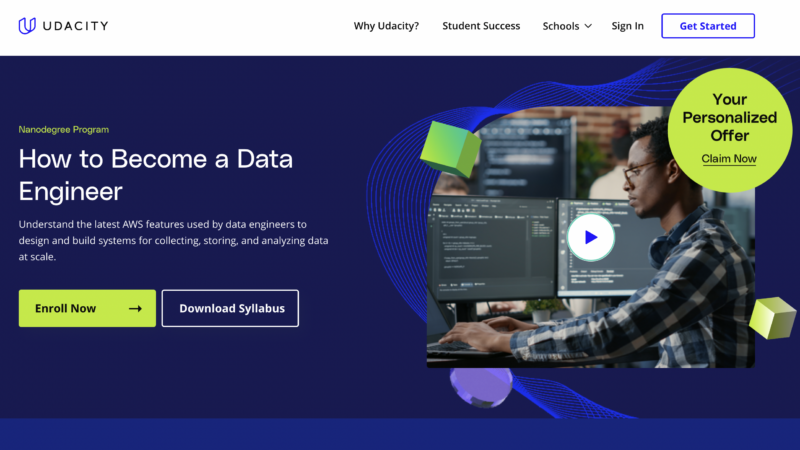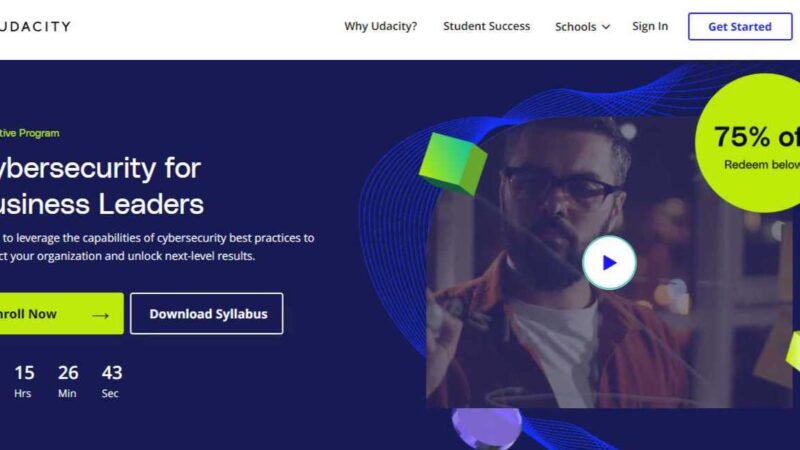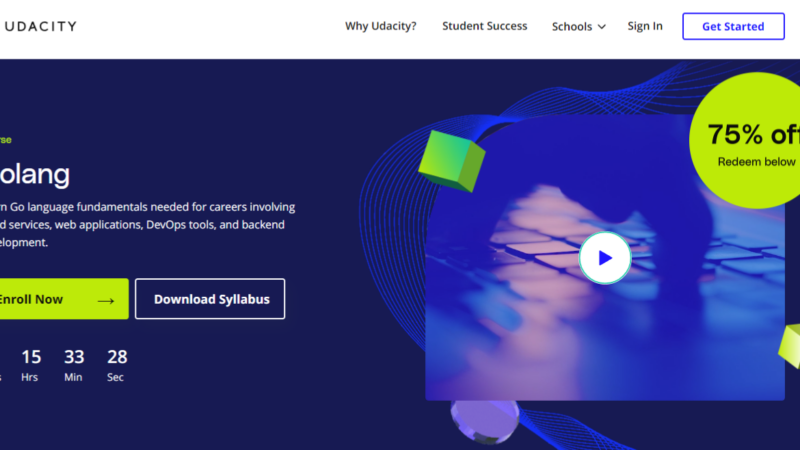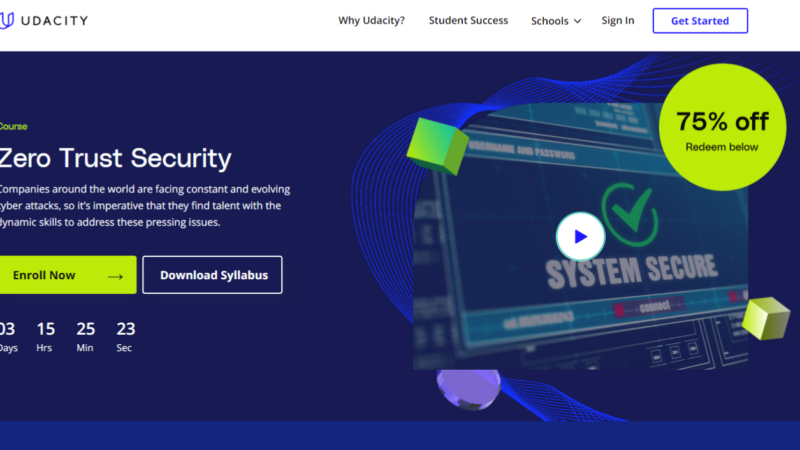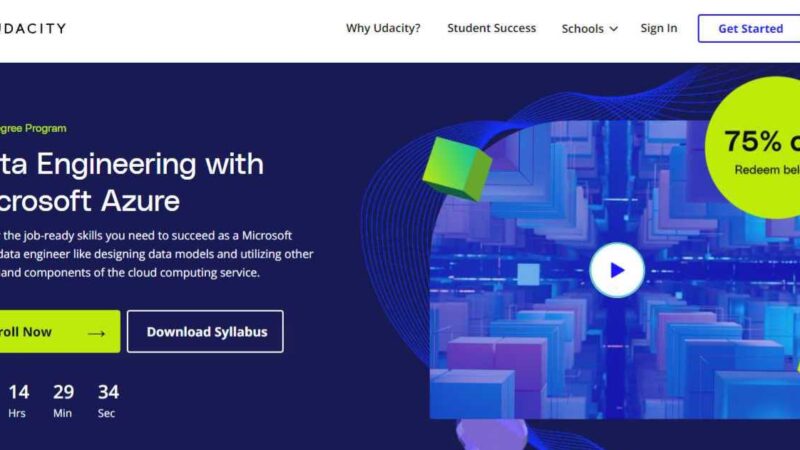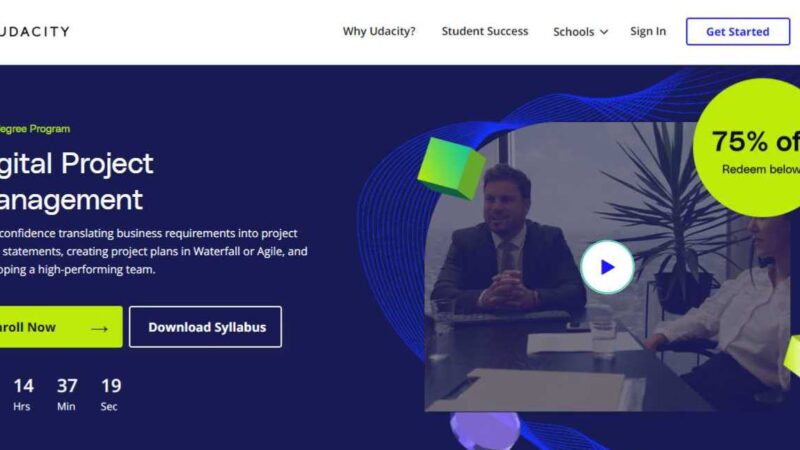Udacity Become a Cloud DevOps Engineer Nanodegree Review

Businesses are beginning to make the switch to cloud-based infrastructures. It gives them the opportunity to continuously expand, tailoring their workflows to fit their company structure. Those with the skills to develop advanced and complex infrastructures using cloud-based technologies are in demand and can take advantage of the evolving market as we make our way to modern business practices.
Learning the skills needed to become a Cloud DevOps Engineer, you could be on your way to landing your first gig with a top-tier company in the world of IT. To scoop up those skills, you could complete the Become a Cloud Dev Ops Engineer Nanodegree from Udacity entering into the field with hands-on practice and a solid knowledge base.
About Udacity
If you haven’t heard about Udacity, you must be new to IT. They have gained recognition year after year, teaming up with top companies in IT to create content for new and anxious learners. The academy was created by two Stanford University professors with a passion to provide access to IT education for learners across the globe. What started off from humble beginnings, turned into a full-fletched academy, with courses ranging from beginner to highly-advanced. They offer video lectures for free and in-depth courses for a fee. Most of their courses cover topics over the most in-demand topics and are taught by a team of instructors with both industry and business experience.
Udacity Nanodegrees
A nanodegree from Udacity is an in-depth course that focuses on one topic. Some of them are created in collaboration with top companies in the industry, providing learners with a curriculum that mimics real-world situations. Apart from a well thought out curriculum, each nanodegree comes with a few perks that make the online academy stand out above the rest. These perks include:
- A technical mentor
- Access to a community of Udacity learners
- Real-world projects that tackle the industries top issues
- Career prep including mock interviews
- A-list instructors that lead lectures and guide projects.
Meet your Instructors
Udacity goes out of their way when selecting their instructors. They lean toward those with a passion for teaching that has experience in the field and some which have gone on to create their own businesses and companies along the way. Meet your instructors for the Become a Cloud Dev Ops Engineer Nanodegree.
Kesha Williams
Kesha has twenty years of experience in the industry. During her time, she has worked solo and with teams, leading them to work together to solve complex industry issues. Currently, she is a software engineering manager for Chick-Fil-A where she leads her team in developing new and improved cloud-based services that enhance business efficiency. On top of all her killer accomplishments, she was also named an Alexa Champion by Amazon, making an amazing addition to the Udacity instructor team.
Carlos Rivas
Carlos is Senior Solutions Architect at Infiniti Consulting. He is the leader of a group that helps business take their business from a more traditional style to a cloud-based well-oiled machine. He has worked for telecommunications during his time and helped construct superior workflows using languages like Java, Python, and PHP.
Noah Gift
Noah has an impressive knowledge base which includes Machine Learning, MLOps, and A.I. He currently travels around to the top universities consulting on the powers of Python for DevOps. As an instructor, he provides a unique perspective to the world of development, showing both the business and development side and how they collide.
Byron Sommardahl
Byron is a child genius that has been developing since the age of 9. During his years as an independent developer, he learned the ropes, taking it along with him as he increased his skills through the university experience. He co-founded Acklen Avenue, a software development company, and has made his way through and all around the world of development in his years.
Course Breakdown
Prerequisites
Before you take off and start the program, you’ll need a few things. Because the course uses JavaScript as the focus language, you’ll need to have an intermediate fluency. This includes understanding how to pull from libraries and construct infrastructures from pre-existing code and newly written code. You should also have previously worked with object-oriented programming and web development with both HTML and CSS.
Lesson One: Cloud Foundations
The first part of this section is all about the cloud. You’ll learn about cloud computing and how it works with security and storage of information. You’ll see how management works in the cloud, learning theory, and techniques that you can use to construct advanced workflows and applications.
Project! Deploy a Static Website
After Cloud 101, you’ll get the chance to let loose and start developing. After you configure hosting and make sure that your created website is compliant with IAM policies, you will deploy to AWS. You’ll work with AWS’s content distribution network, using it to help speed up your delivery. In the end, you’ll access your website in a browser to see the final product up and running.
Lesson Two: Deploy Infrastructure as Code (IAC)
To create applications and other systems, you first have to lay out code foundations. You’ll start by learning these key components, seeing how they fit together to create a solid infrastructure. Using CloudFormation AWS, you’ll practice just like they do in the field, starting from the idea and planning to deployment.
Project! Create a Web App with CloudFormation
The second project is super fun and leads you through the development cycle from start to finish to design an app that mimics Instagram. Starting with the networking components and security requirements, you’ll work on deployment step by step. The cool thing is, this is a project that you’ll be able to show off in your portfolio, adding it to your hands-on experience to show off to future employers.
Lesson Three: CI/CD Pipelines, Monitoring, and Logging
This section is all about developing a systematic flow of data. You’ll learn about the Continuous Integration and Continuous Deployment (CI/CD) pipeline, using it to bridge the between the developer and the cloud. Learn the benefits of continuous monitoring, learning how it can help you with deployment cycles, and continuous monitoring and protection to create alerts in case of an application attack.
Project! Build an Automated CI/CD Pipeline
Quick-release cycles are part of the job as a developer. You’ll learn this quickly as you take on the role of Cloud DevOps engineer for a Human Resources company UdaPeople. During this project, you can put all of your new skills to the test, seeing how they come together in the creation of applications and automation where alerts are automatic and updated frequently.
Lesson Four: Microservices at Scale
Using Machine Learning techniques, you’ll get a glimpse at Kubernetes clusters. Using both existing and new techniques, you will see how to load and test Kubernetes applications in order to apply the best practices for the fastest and most efficient development.
Project! Operationalize a Machine Learning API
Keep working with your microservices in this section to create an elastic Machine Learning interface API. Using your new knowledge from this section covering Kubernetes, you can validate your design by first testing and them making sure that it is up to par to meet the demands of the deployment cycle.
Project! Capstone Project
In this part of the course, you’re set free. Starting by building a CI/CD pipeline, you’ll create your own application. You will define the scope and select your deployment strategy, going from start to finish through the entire development cycle. Use this as an addition to your portfolio for another example of hands-on industry experience.
How Long Does the Course Take?
What if we told you that you could become a Cloud DevOps Engineer in just four months? Would you believe it? Well, you should! Udacity estimates that, at just 4 hours per week, you could finish up the course, making your way to landing your first gig. It might seem to list a lot to take in but 4 months is a fair estimate. You can take longer if you’d like or finish it up fast, whatever your schedule (and your budget) allows.
What’s the Course Cost?
Speaking of budget, let’s look at the cost of the course. Udacity offers a few ways to pay and adds a discount to one of their options. To choose the best one for you, it’s best to first take a look at your schedule and the time you have to dedicate to the course, using it to decide the most affordable way to pay.
Pay as you Go
With this option, you can take as long (or as little) as you like. You’re charged per month of access, which can be good and not so good. The good part is, you could finish in record-breaking time, saving a few bucks along the way. For each month that you have to access you’re charged $359. This might motivate you to get on the ball and finish up quickly, saving a few bucks in the process.
Udacity’s Bundle Deal
The course duration estimated by Udacity comes with a purpose. They use it in putting together a package that learners can pay upfront. This includes access for the 4 months of the Become a Cloud Dev Ops Engineer Nanodegree plus, a 15% discount. This brings the total course cost to $1236. This is a great deal if you can finish in four months, taking advantage of the discount in the process.
What Learner’s Say
“The course offers a very good foundation for newcomers to the DevOps. Adding a new component or a complete course on leveraging security tools in the whole process will make this even more useful. In general a good taste of learning and a satisfying journey. Quick review: The course on jenkins and CloudFormation could be improved. The course from Noah (4th course) is the best one, very practical and informative with lots of additional challenge quests one can choose to complete. The frist course is also good.” – Diego P.
“Thanks!! It was a great learning experience. The instructor was amazing and each section was so organized it was introductory type but the way each topic was conducted was so amazing, she explained things so claim and no need of making the video speed up and down. she was trying to limit the scope of each title and give the appropriate AWS reading reference.” – Amanuel W.
How’s the Job Market?
It is estimated that 80% of businesses will move their businesses and applications to the cloud by 2025. This has opened up a huge demand for those with the skills to develop systems using cloud-based techniques. Becoming a DevOps engineer with skills on cloud-based technologies, you could be a huge asset to companies, helping them make the switch over to a more efficient way of doing business to keep up with our fast-paced advanced IT obsessed world.
Dev Ops is a hot career these days. Combine the skills necessary to develop integrative and complex applications along with knowledge of how to submit them to the cloud and you’ve got two in-demand and highly profitable sets of skills. With Udacity, you could be on your way to landing a gig in just four months. With the Become a Cloud Dev Ops Engineer Nanodegree, you’ll learn everything from deployment infrastructures to techniques and technologies used in the cloud-based field.
Go Get IT!
The best part about this course is that you’ll walk away with two fully finished projects that you can add to your portfolio. Use these as your first sets of actual industry experience, using them to prove your skills. Then, you can take on a mock interview with a career expert to rock your first interview. If you’ve thought about breaking into the exciting and fast-paced world of IT, there has never been a better time than ever. Take advantage of the Udacity discount or, get to work and finish faster than the estimated time to save some dough.
Get Flat 65% with our exclusive link, Claim Now
